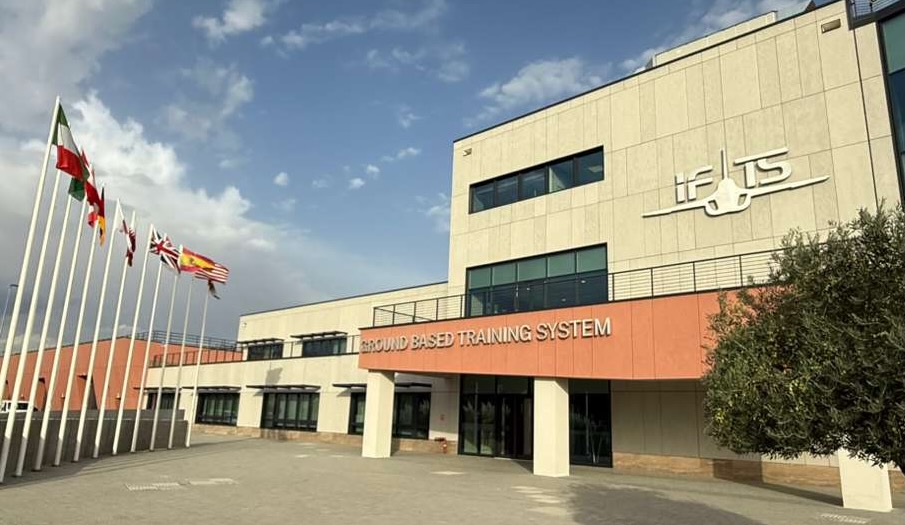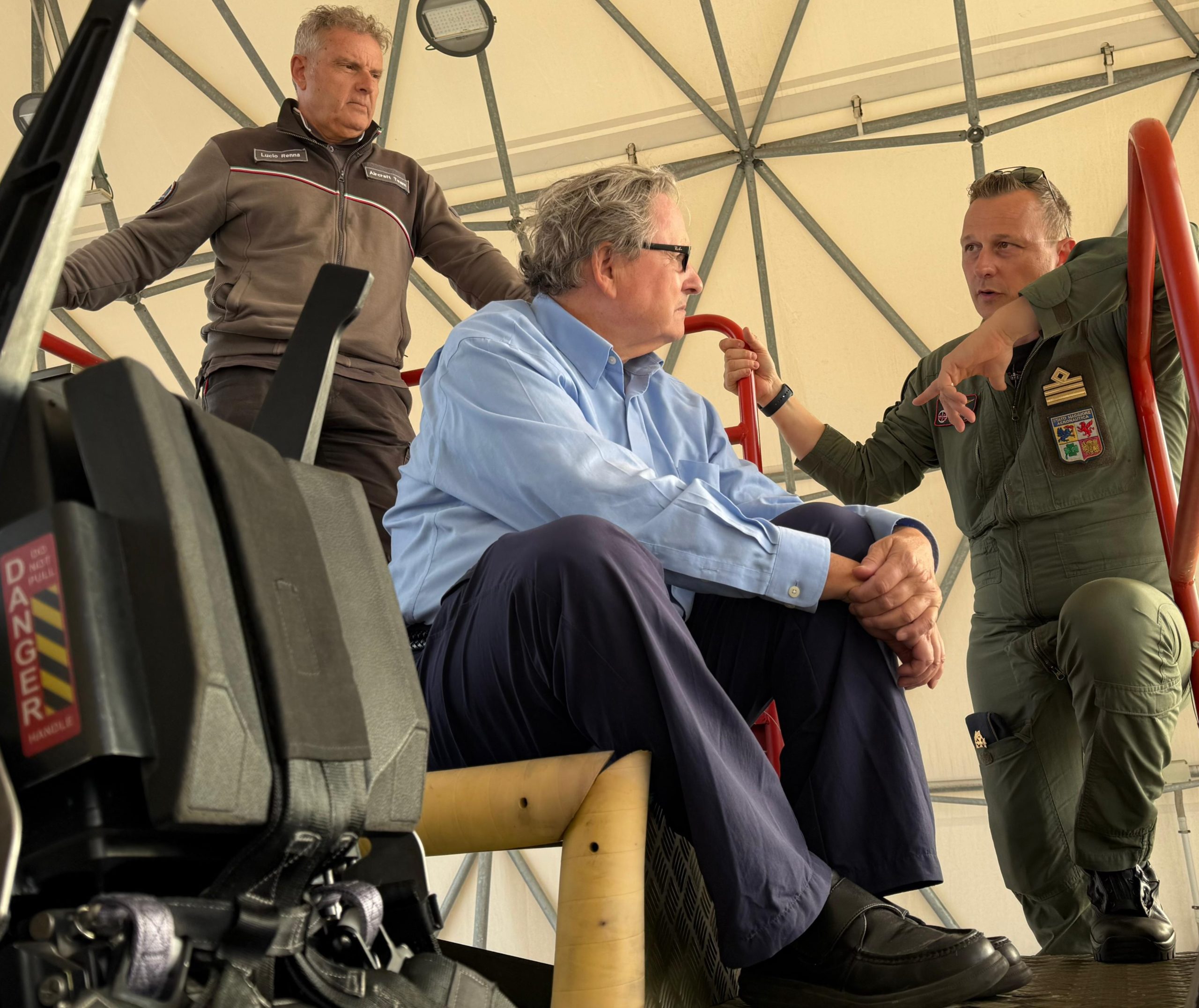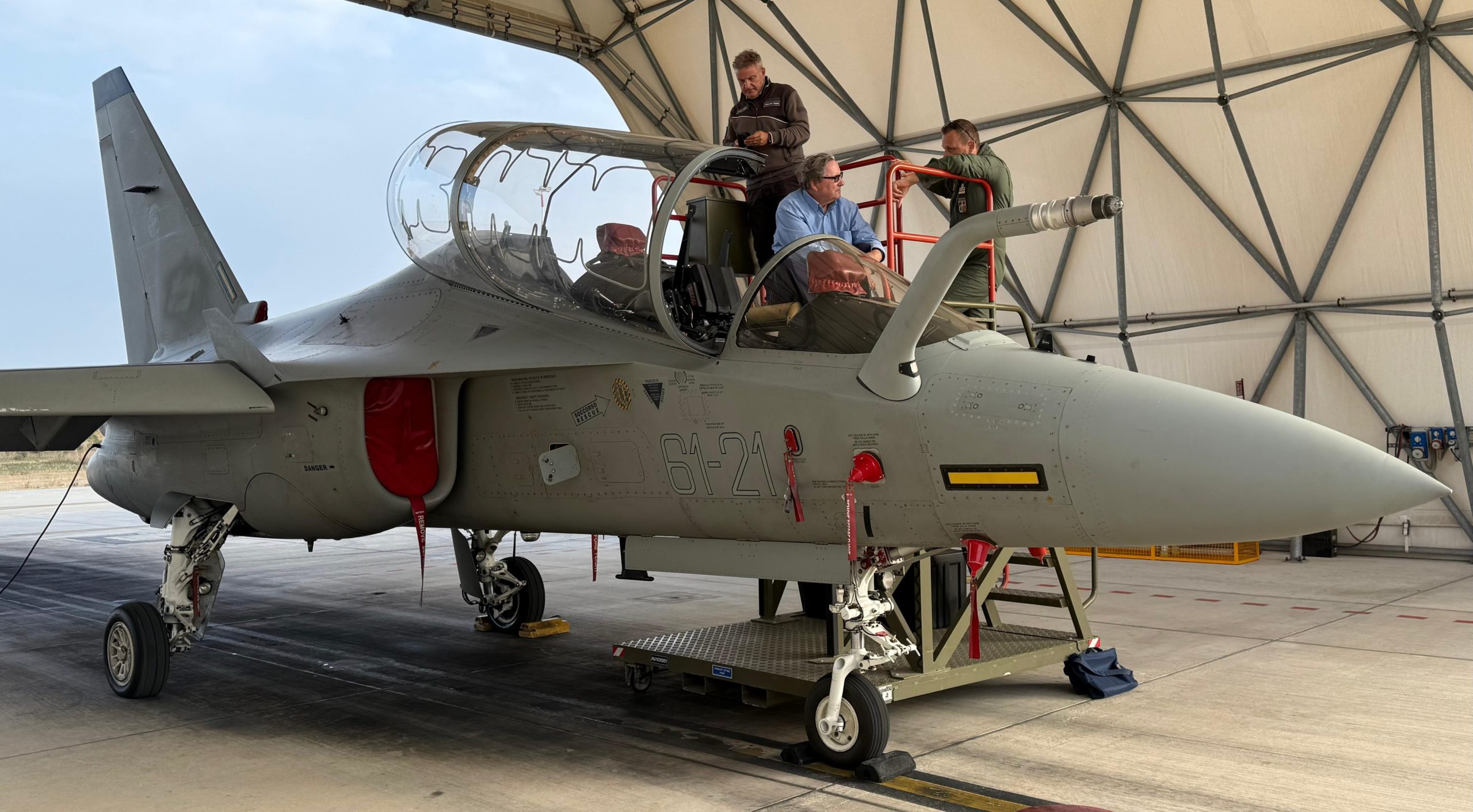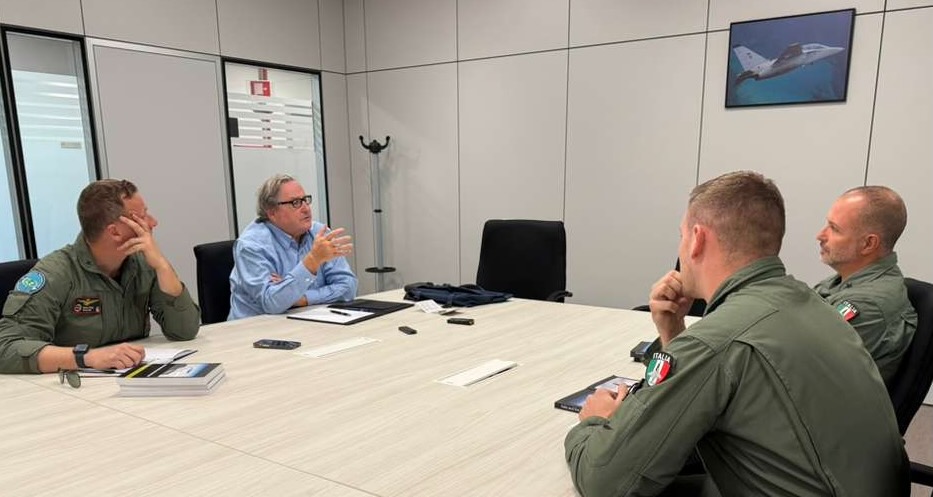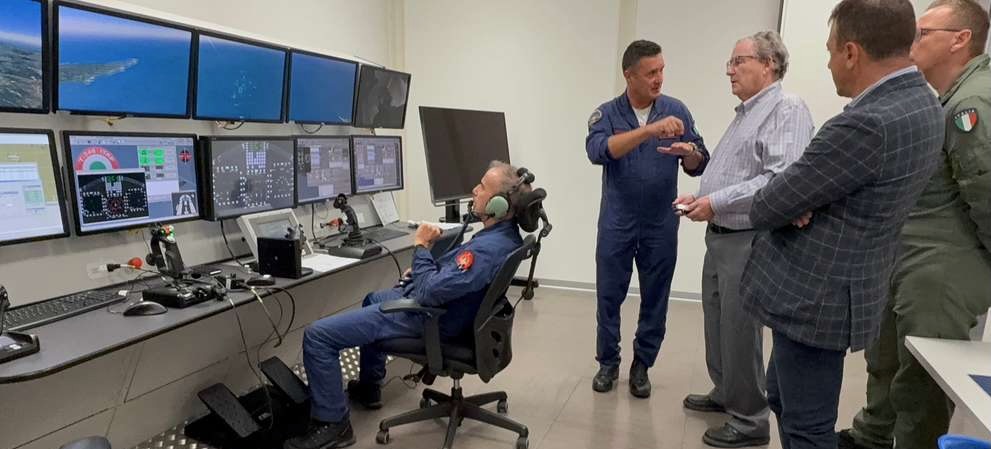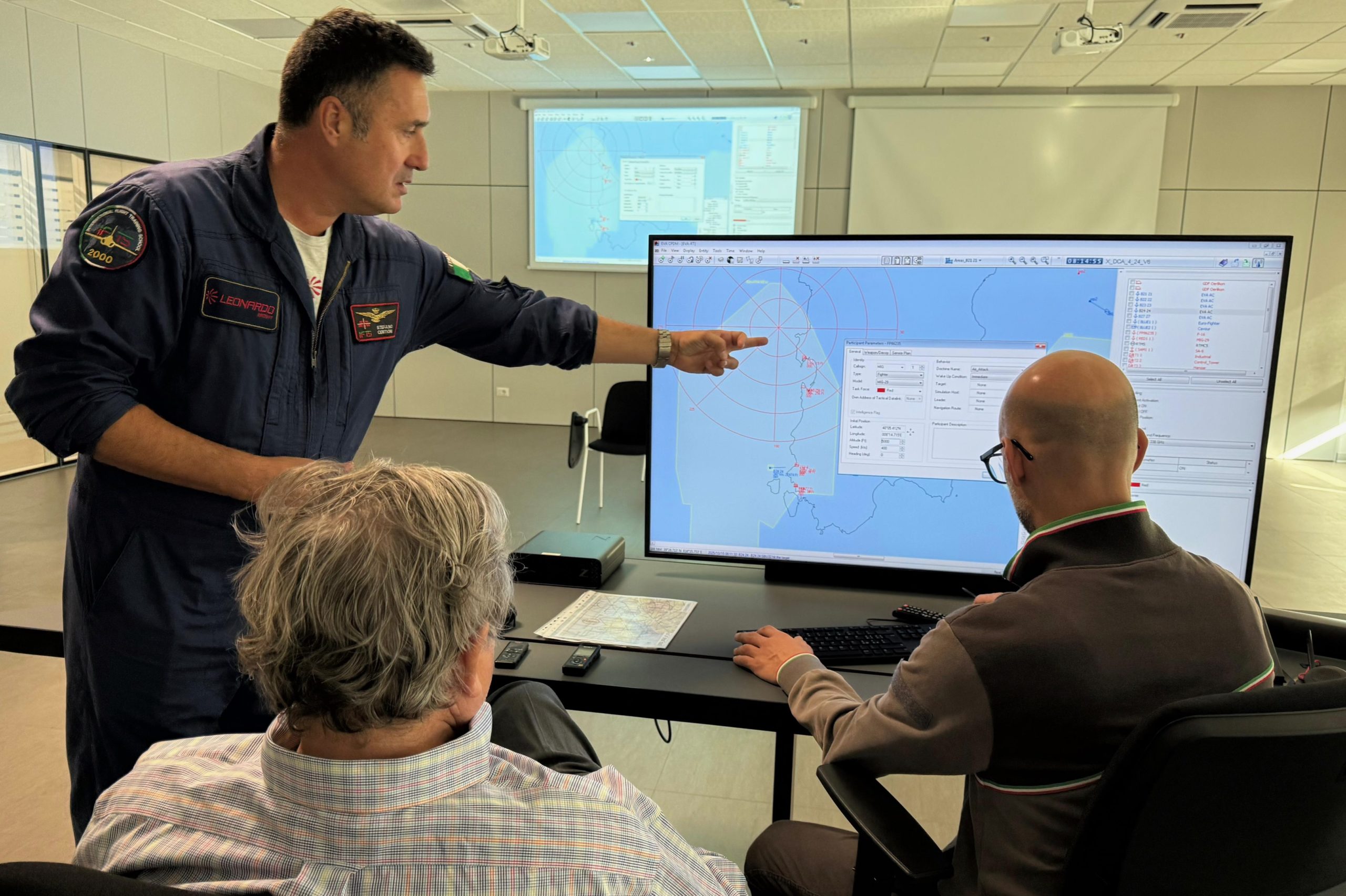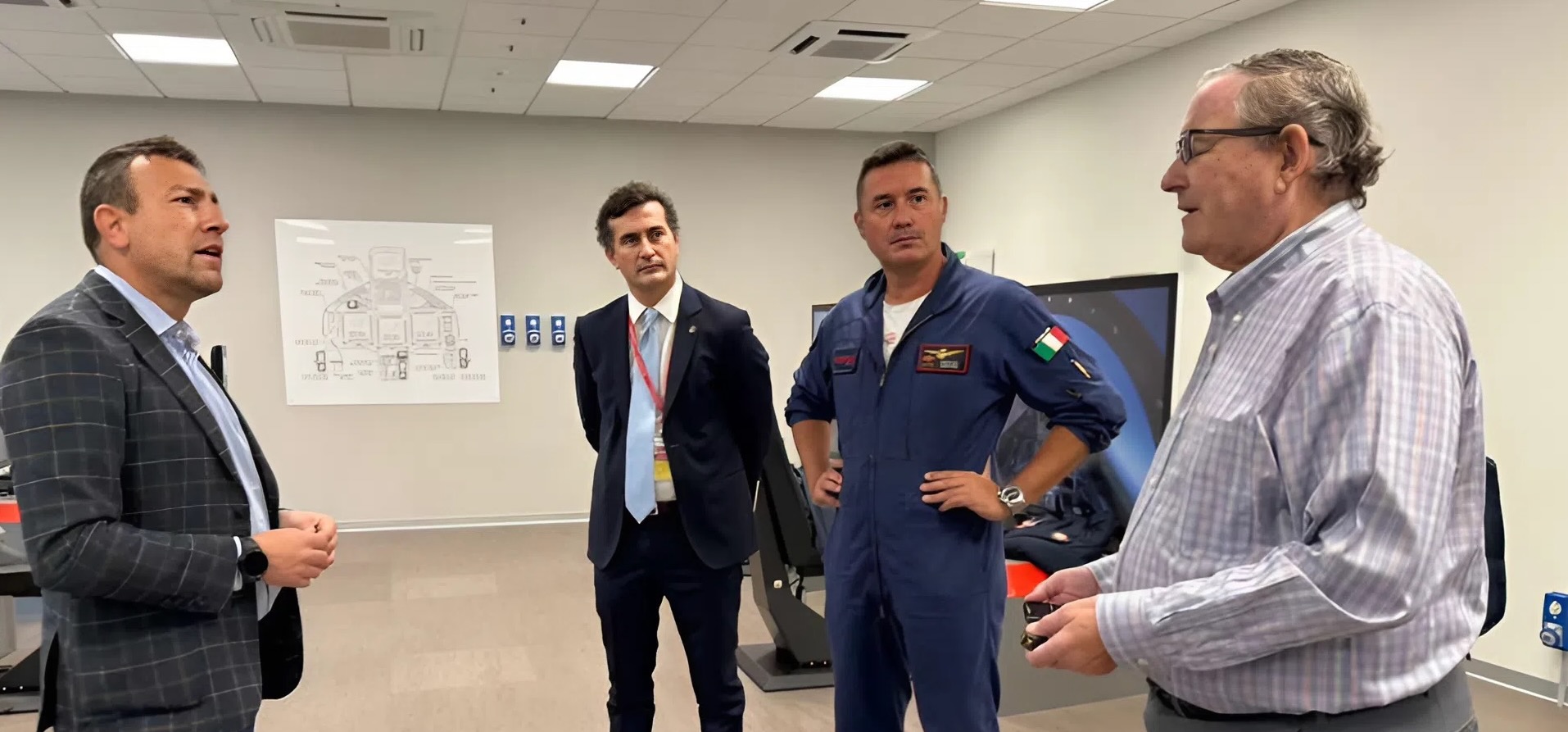By Robbin Laird
After learning about the International Flight Training School during my visit to Rome in November 2024, I was eager to understand more about Italy’s innovative approach to shaping air power training. The opportunity came in October 2025, when I returned to Italy to meet with Italian Air Force officers in Rome before visiting the IFTS facility at Decimomannu airbase in Sardinia. What I discovered was far more sophisticated than I had anticipated. It provides a comprehensive training ecosystem that represents the future of military aviation education.
A Vision Realized
The progressive collaboration between the Italian Air Force (Aeronautica Militare) and Leonardo to establish IFTS began with an ambitious goal: creating a world-leading military pilot training center. The journey from concept to reality unfolded systematically over six years, demonstrating the commitment required to build something truly exceptional.
The partnership launched in July 2018 with an Italian Air Force-Leonardo Letter of Intent, signaling the initial commitment to this transformative project. By March 2020, the collaboration expanded with the Leonardo-CAE Final Industrial Collaboration Agreement, bringing CAE’s simulation expertise into the consortium. Four months later, in July 2020, the formal Italian Air Force-Leonardo Decimomannu Collaboration Agreement solidified the operational framework that would guide the school’s development.
December 2020 marked a ceremonial milestone with the Decimomannu Groundbreaking Ceremony, officially launching construction of what would become a state-of-the-art training facility. In March 2021, Leonardo CAE Advanced Jet Training was incorporated as the operating entity responsible for running the school. The first students began training with IFTS courses at Galatina in June 2021, followed by courses at Decimomannu in July 2022. The final milestone arrived in the first quarter of 2024 when the school achieved full operational capability after completing the relocation from Galatina, consolidating all operations at Decimomannu.
This six-year transformation turned a strategic vision into a fully operational training center designed to set new global standards for military pilot excellence.
Military Led, Industry Powered
The partnership structure embodies a philosophy of “Military Led, Industry Powered,” creating a unique balance between operational expertise and technological innovation.
The Italian Air Force provides military leadership, drawing on over 70 years of aviation experience to guide the school’s direction. The Aeronautica Militare leads syllabus development, standardization, tests and exams, while overseeing both flight and ground training programs. Critically, the Air Force handles instructor pilot selection for both military and civilian roles, ensuring that training standards remain uncompromised.
Industry support comes from two key partners. Leonardo contributes as the leading integrated training systems and services provider, supplying the T-346 aircraft and logistics support, ground-based simulation systems and support, plus campus construction and services. CAE brings its specialized expertise in simulation systems and services to complement Leonardo’s capabilities.
This joint vision aims to create a worldwide training excellence center that combines military operational knowledge with cutting-edge industry technology and infrastructure. The Italian Air Force sets the training standards and requirements, while Leonardo and CAE provide the technological platforms, facilities, and support services to execute the training mission.
My visit underscored how comprehensive IFTS’s effort is in terms of Level IV training or the training of pilots who already have their wings and are being prepared for their final training step in the operational squadron they would join. This advanced phase represents a critical transition point where pilots move from basic flying skills to combat-ready operational capabilities.
The Ready Room Effect
During my time at IFTS, I visited the flight line, lived on campus, and talked in detail with instructors, officers, and contractors regarding their activities. I noted the appearance on campus of many student pilots from the 12 nations currently training at the facility, creating a truly international learning environment.
It was an immersive experience that underscored a key point my colleague, former USMC squadron commander Ed Timperlake, has often made about pilot knowledge gained in the ready room. According to Timperlake, the ready room serves as a crucial informal learning center for air combat pilots in several essential ways.
First, it enables peer learning and knowledge transfer. The ready room is where pilots at different experience levels discuss flying, share experiences, and learn from squadron mates who have been exposed to different career paths and operational situations. This cross-pollination of experience accelerates learning in ways that formal instruction cannot replicate.
Second, it facilitates cultural and professional development. Beyond technical skills, the ready room is where pilots develop camaraderie and understand what it means to be part of the aviation community. It’s where they “talk airplane stuff” and build the team cohesion essential for combat operations.
Third, it serves as a venue for tactical innovation and standardization. The ready room hosts interesting and often heated discussions about training methods and operational procedures that aren’t yet defined in manuals. These debates drive innovation and help establish best practices that eventually become standardized.
Finally, it enables evolution beyond individual skills. The ready room is where pilots transition from focusing solely on their own performance to understanding the bigger picture and how they fit within the larger combat force. It’s where the realization occurs that success isn’t just about individual capability, but about functioning as part of a coordinated team.
These informal ready room exchanges are foundational to shaping combat training approaches and capabilities for the entire air combat force.
Creating a Living Training Ecosystem
IFTS enables such discussions among students from various nations and between students and instructors. But the innovation goes deeper. Twice a year, instructors from the M-346 program, the various operational conversion units for Eurofighter, Tornado, and F-35, and operational squadron pilots come together at Decimomannu. They fly together, review procedures, and adjust curricula based on real-world operational experience.
This creates a continuous feedback loop where operational lessons flow backward through the training system. Squadrons deployed on NATO missions identify tactical or procedural changes based on evolving threats and operational realities. These insights are brought back to IFTS, where they inform curriculum adjustments and training emphasis. The result is a dynamic system that remains constantly aligned with operational requirements rather than becoming static or obsolete.
The Digital Foundation
Most tellingly, I had the opportunity to visit and be briefed on the four simulation rooms in the ground-based training center. I was able to see what each accomplished and how they were built to interact, creating an entire interactive digital enterprise that informs the live flying operations within IFTS.
It was an eye-opening experience, much more profound than simply reading about the operation. The simulation systems don’t exist in isolation for they’re networked to create scenarios that can involve multiple aircraft, different threat environments, and complex tactical situations. Students can train on missions that would be too dangerous, expensive, or logistically challenging to execute in actual flight, yet gain realistic experience that transfers directly to the cockpit.
The integration between the ground-based training systems and live flight operations creates a seamless learning progression. Skills developed in simulation are refined in the air, while lessons learned from flight are captured and fed back into simulation scenarios. This bidirectional flow of training data and operational experience ensures maximum efficiency and effectiveness.
A System, Not Just a School
It was during this visit that I learned something fundamental: the “S” in IFTS actually stands for dynamic system, not simply “school.” This distinction is more than semantic for it reflects a philosophical understanding that effective combat aviation training requires more than just instruction. It requires a comprehensive, adaptive ecosystem that integrates technology, human expertise, international collaboration, and continuous operational feedback.
IFTS represents a new model for military aviation training, one that recognizes the complexity of modern air combat and the need for training systems that can evolve as rapidly as the operational environment they prepare pilots to enter. By combining Italian Air Force operational expertise, industry technological capability, international student participation, and integrated digital and live training, IFTS has created something genuinely innovative.
The facility at Decimomannu isn’t just training pilots; it’s advancing the science of how pilots are trained, creating a model that other nations are studying carefully. In an era where air superiority remains crucial to military success and where the technology and tactics of air combat continue to evolve rapidly, IFTS demonstrates that the most effective approach to pilot training is one that views it as a dynamic, integrated system rather than a static program.
As I departed Sardinia, I carried with me a deeper appreciation for what Italy has accomplished. IFTS stands as a testament to what’s possible when military vision, industry capability, and international cooperation align around a common goal: preparing the next generation of combat pilots for the challenges they will face.


